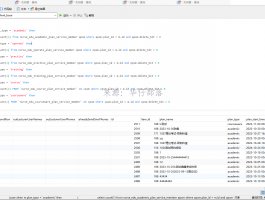ArrayList比较简单,主要是通过数组来实现的
需要注意的是其初始容量是10
/** * Default initial capacity. */ private static final int DEFAULT_CAPACITY = 10;
需要注意增长方法grow()
/** * Increases the capacity to ensure that it can hold at least the
* number of elements specified by the minimum capacity argument.
*
* @param minCapacity the desired minimum capacity */private void grow(int minCapacity) {// overflow-conscious codeint oldCapacity = elementData.length;int newCapacity = oldCapacity + (oldCapacity >> 1);if (newCapacity - minCapacity < 0)
newCapacity = minCapacity;if (newCapacity - MAX_ARRAY_SIZE > 0)
newCapacity = hugeCapacity(minCapacity);// minCapacity is usually close to size, so this is a win:elementData = Arrays.copyOf(elementData, newCapacity);
}
只要size > 数组的长度,就会触发grow,其中增长比例是原来的容量的一半
int oldCapacity = elementData.length; int newCapacity = oldCapacity + (oldCapacity >> 1);
然后把原来数组的内容拷贝到新的数组
============================================分割线========================================================
ArrayList和LinkedList的区别
ArrayList是通过数组来实现的,读取性能很高,随机访问时间复杂度为O(1),适用于读大于写的场景,无序数据
LinkedList是是通过双向队列来实现的,更新效率更高,写只需要修改前后两个节点的相关引用,但是读取效率比较低,需要最多遍历一半长度的队列,适用与写大于读的场景,有序数据
原文链接:https://www.cnblogs.com/afuu/p/12918018.html
本站声明:网站内容来源于网络,如有侵权,请联系我们,我们将及时处理。





还没有评论,来说两句吧...